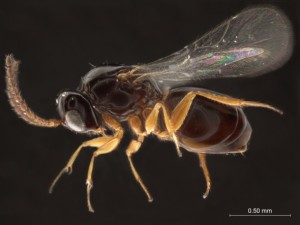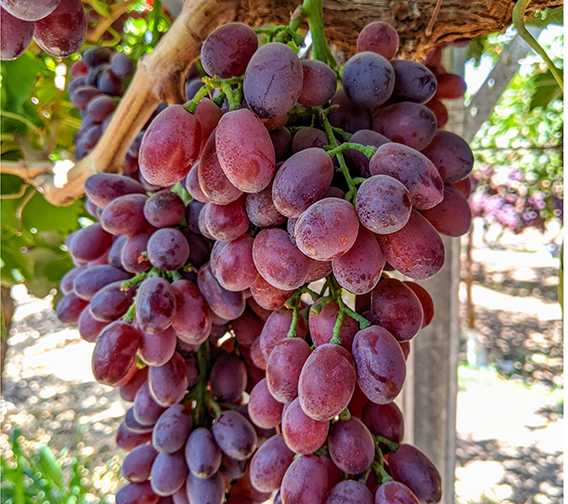Online Help In Determining ID Of Small Parasitic Wasps

A new online resource, coauthored by an ARS scientist, will make it easier to identify and study parasitic wasps, such as this Angustocorpa wasp from South Africa (about 2.5 millimeters long).
Photo credit: Matt Buffington
Determining the identity of tiny parasitic wasps can be a time-consuming process that includes comparing their features to descriptions in published works and disparate specimen collections. Now, the same task could begin online with the click of a mouse, thanks to an international team of researchers, including one from USDA.
The team has published (ZooKeys, April 2015) a new online document called a “monograph” that consolidates the latest information on the wasp family Cynipoidea. The monograph uses pairs of interactive, image-based identification keys — including those of wing shape, body segmentation, and other characteristics — to help users navigate to the correct genus or species of a specific wasp, along with available biological, geographic, and other information about the insect, including locations of existing specimens.
Cynipoid wasps attack the larval stages of pest flies, such as leaf-mining flies and fruit flies, according to Matt Buffington, a team member and entomologist at USDA Agricultural Research Service’s (ARS) Systematic Entomology Laboratory in Washington, DC.
The monograph will make it easier to identify and categorize new species as they’re discovered and it will broaden scientific understanding of their taxonomic associations and biological diversity. This could be very important in identifying wasp species that have potential as biological control agents, such as those that parasitize crop-damaging flies.
Buffington collaborated on the monograph with Simon van Noort, with the Natural History Department at the Iziko South African Museum, and Mattias Forshage, with the Swedish Museum of Natural History.
You can read more about their research in the August issue of AgResearch.
Source: USDA-ARS










